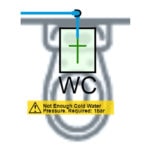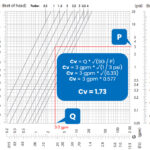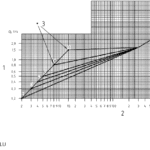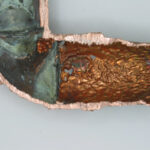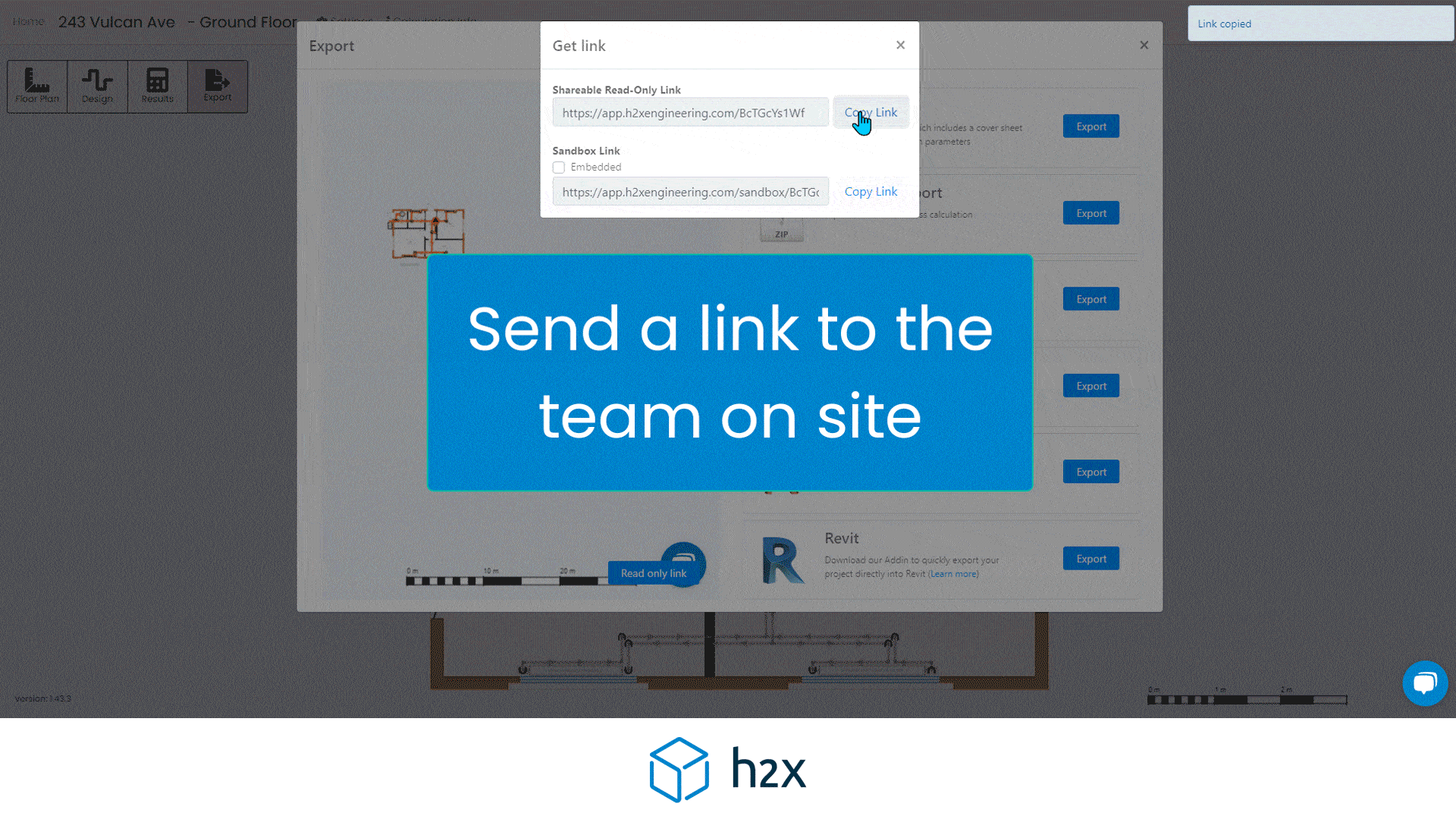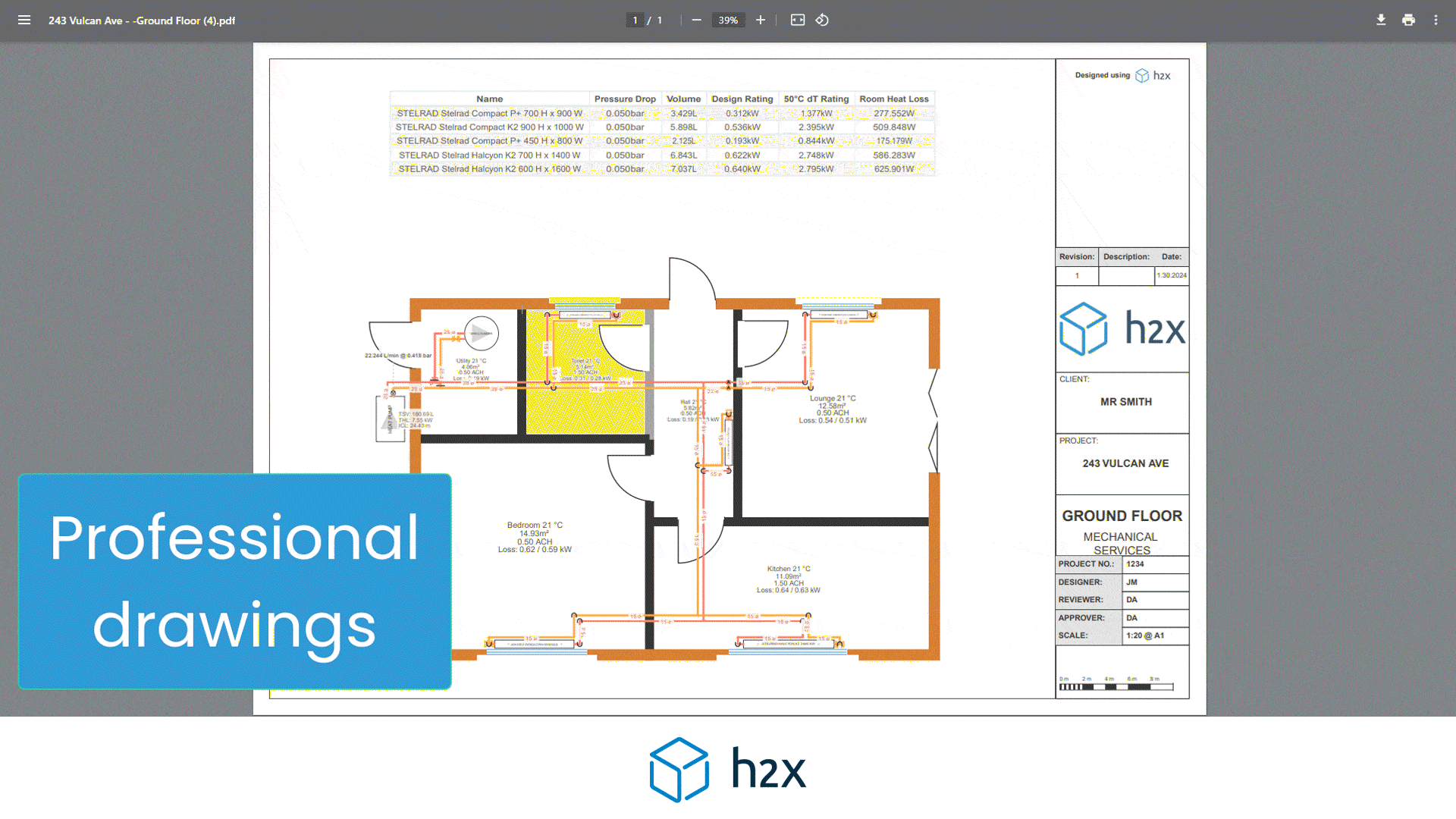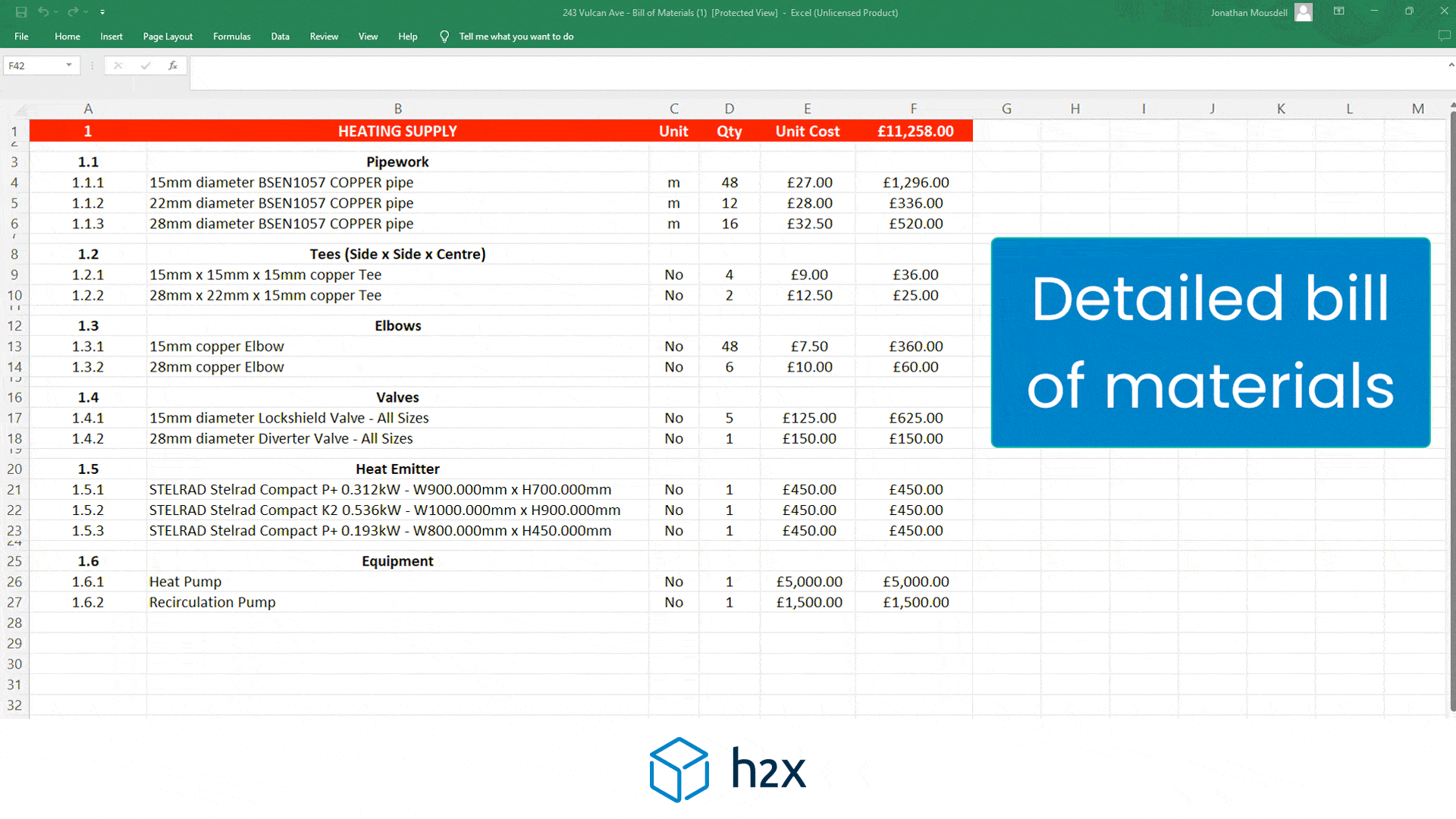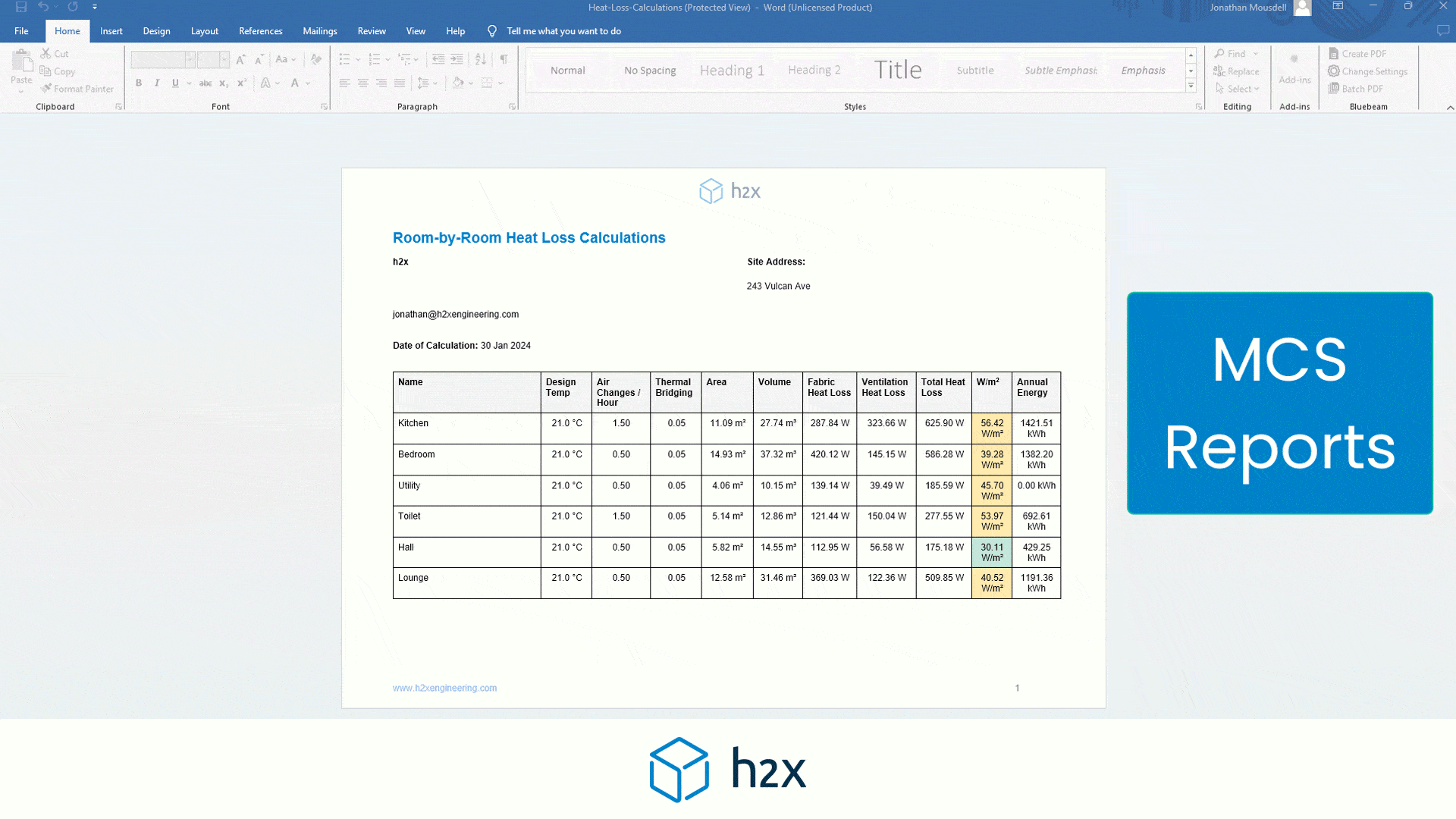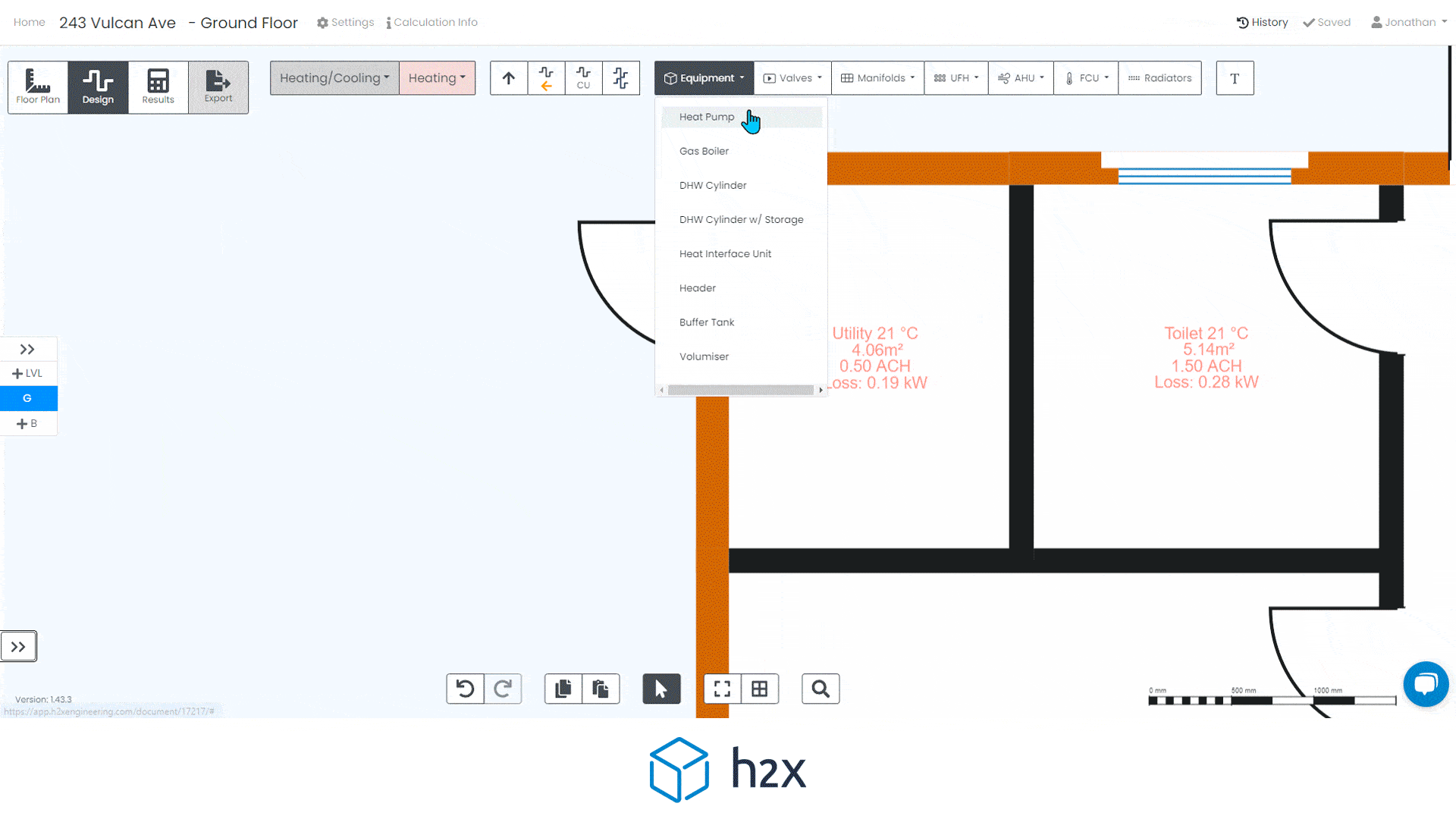
Why is Static Pressure Important?
Static pressure is the maximum pressure that you can expect in the system. It is caused by water being 'static,' i.e. there is no flow rate.
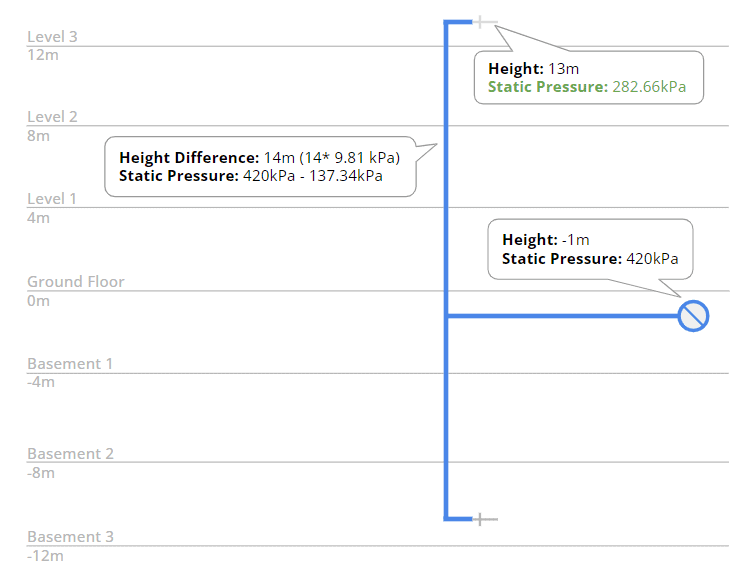
What is static pressure?
The maximum pressure that you can expect in the system.
What causes static pressure?
It is caused by water being ‘static,’ i.e. there is no flow rate.
When is a water system static?
A water system operates anywhere between the following flow rates:
- Peak – such as 8am when everyone is showering before work
- Static – such as in the middle of the night when no one is using water
Therefore, the system is’ static’ when no one is using the water.
How does the flow rate affect the pressure?
When the flow rate decreases, the pressure increases.
When the flow rate decreases all the way down to 0 L/s (static), the pressure increases to its highest possible point.
Why does static pressure matter?
Every component in a water system has a maximum inlet pressure.
If the pressure in the system exceeds the maximum inlet pressure, the following occurs:
- The warranty of the component(s) will be void
- The component (pipe/valve/taps) will not function properly
- The system design will be non-compliant
What static pressure should I design?
The typical maximum inlet pressure for components is:
- TMV – 500kPa
- RPZ – 1600kPa
- Fixtures – 500kPa
- 50mm Copper Pipe – 1710kPa
- 50mm Steel Pipe – 6800kPa
Prior to undertaking your design, to ensure your design meets the correct maximum pressure, you should always check:
- The technical data sheet of the products that you are using
- The requirements in your local standards
How to calculate static pressure?
The information you require for your calculations is:
- The maximum pressure at the water connection
- The height difference between your water connection and the component
Note that flow rates, velocities, pipe sizes, etc. do not have any effect on the static pressure.
Example
In this example, we will be calculating the static pressure at the highest and lowest fixtures in the building.
1. Water Connection
The water connection properties are:
Height: -1m
Static Pressure: 420kPa
2. Fixture Heights
Highest Fixture: 13m
Lowest Fixture: -11m
3. Height Difference
For every 1m change in height, the pressure changes by approximately 9.81kPa (due to Earth’s gravity).
As water goes up the building, the pressure decreases 9.81kPa per metre.
As water goes down the building, the pressure increases 9.81kPa per metre.
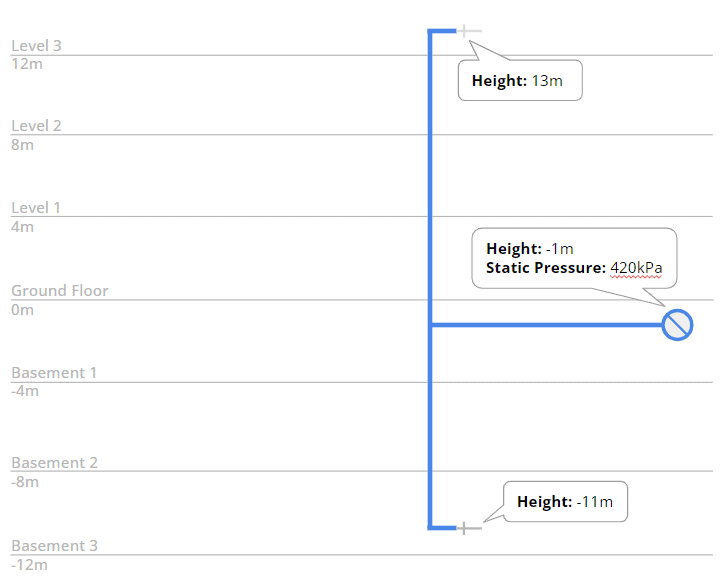
4. Highest Fixture Pressure Calculation
Height Difference = Highest Fixture Height (13m) – Water Connection Height (-1m)
Height Difference = 13m – -1m
Height Difference = 14m
Pressure at Highest Fixture = Pressure at Water Connection (420kPa) – Height Difference (9.81kPa * 14m)
Pressure at Highest Fixture = 420kPa – 137.34kPa
Pressure at Highest Fixture = 282.66kPa

5. Lowest Fixture Pressure Calculation
Height Difference = Lowest Fixture Height (-11m) – Water Connection Height (-1m)
Height Difference = -11m – -1m
Height Difference = 10m
Pressure at Lowest Fixture = Pressure at Water Connection (420kPa) + Height Difference (9.81kPa * 10m)
Pressure at Lowest Fixture = 420kPa + 98.1kPa
Pressure at Lowest Fixture = 518.1kPa
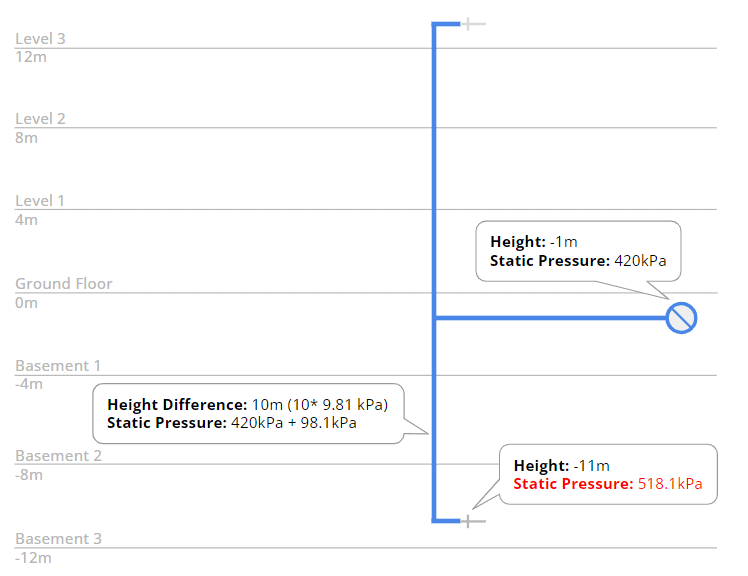
6. Conclusion
Fixtures generally have a maximum inlet pressure of 500kPa.
The static pressure at the lowest fixture is 518.1kPa which exceeds the maximum inlet pressure.
Therefore, a pressure reduction valve will be added to the design to ensure the pressure does not exceed 500kPa.

h2x automates the pressure calculations based on the inputs from the water connection and the heights assigned to your fixtures/nodes.
H2X will also provide warnings where the pressure exceeds the component(s) maximum inlet pressure.
The video below explains the design and calculation process using H2X:
H2X was built by engineers to help engineers work faster, better and more effectively.
If you would like to try H2X today, sign up for a 14-day free trial now.
h2x: All-In-One Tool for Calculating, Designing, Estimating, and Paperwork
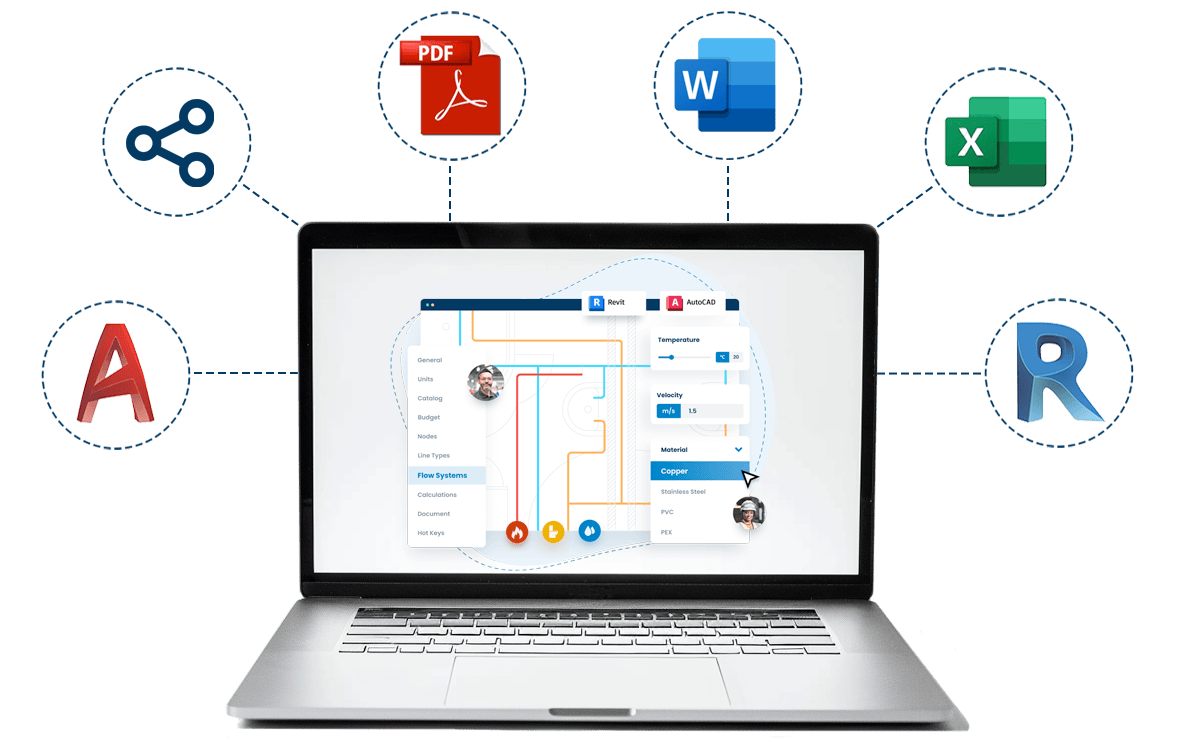
What's in the Pipeline?
Get technical resources delivered to your inbox weekly!
Testimonials
What Installers Say
What Consultants Say
A game changer for the humble plumber. Incredible.
Brad Winkel
Director at Queenstown Plumbing
Brilliant, simple and easy to use. Game changer.
James Major
Director at Hubb
Big time game changer to the industry!
Viv Jude
Director at UHC
Incredible software! Super user-friendly and allows you to save so much time.
Devni Gamage
Engineer at DMA
h2x is great software, our company use it nearly every day. It is easy to use with direct conversion from h2x to Revit.
Callum Craig
Engineer at WDE
h2x is fantastic software. It is very easy to use and the ability to output to Revit is a fantastic time saver.
Joe Kirrane
Engineer at MEP


